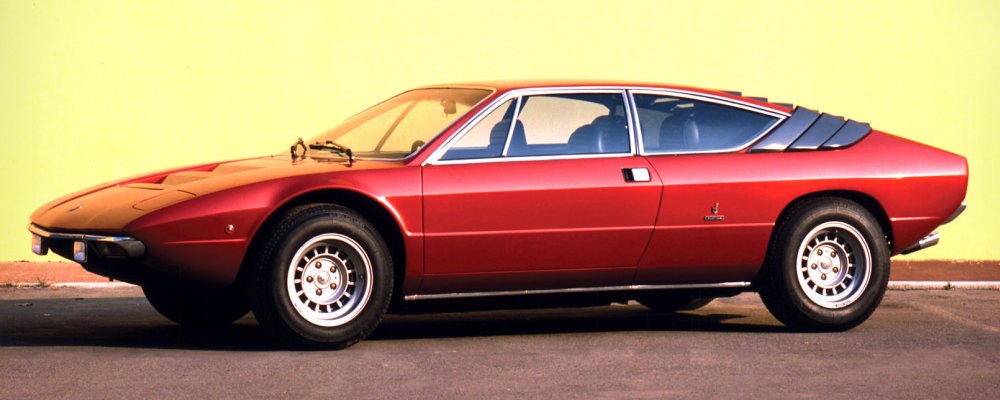Description
The Lamborghini Urraco P 250 Prototipo was the final developmental stage of the company’s ambitious new mid-engined V8 project before it entered production in 1972. Building upon the earlier 1970 Urraco Prototipo Giallo, this car represented the refined, near-production form of Lamborghini’s vision for a smaller, more accessible sports car that could sit alongside the Miura and Espada. The P 250 Prototipo was a turning point: it preserved the purity of Marcello Gandini’s original Bertone design while introducing the practical and mechanical refinements necessary for series manufacture.
By 1971, Lamborghini’s engineering team under Paolo Stanzani had spent two years developing the Urraco platform—a compact, mid-engined 2+2 that aimed to combine Lamborghini’s signature performance with comfort and affordability. The P 250 Prototipo served as the public proof of that concept, and its presentation signaled that the company was ready to take this new direction seriously. Compared to the show car of 1970, the Prototipo featured a fully operational drivetrain, production-spec interior, and reworked chassis geometry, all carefully tested by the factory’s development driver Bob Wallace on the roads and circuits around Sant’Agata Bolognese.
The Urraco P 250 Prototipo was powered by Lamborghini’s newly developed 2.5-litre all-aluminium V8 engine, a completely in-house design that embodied the company’s mechanical sophistication. Displacing 2,463 cc and featuring a 90-degree layout with single overhead camshafts per bank and four twin-choke Weber carburetors, it produced 220 horsepower at 7,500 rpm. Power was delivered to the rear wheels through a five-speed manual gearbox, allowing the car to reach a top speed of 240 km/h (149 mph). The engine’s smooth power delivery and eager revving nature set the tone for Lamborghini’s future V8 models, striking a balance between tractability and high-rev performance.
The chassis was constructed from pressed-steel sections forming a strong semi-monocoque structure. One of the major innovations of the Prototipo was the use of MacPherson strut suspension both front and rear—a compact, efficient design that saved space while providing excellent handling and ride comfort. Four ventilated disc brakes ensured strong and consistent stopping power, while the car’s mid-engine configuration gave it near-perfect weight distribution. On the road, the prototype demonstrated impressive agility and stability, characteristics that would carry through to the production Urraco P 250.
Visually, the Urraco P 250 Prototipo remained faithful to Gandini’s stunning original design but with small refinements that hinted at its readiness for production. The sharp wedge profile and taut surfaces gave it a modern, purposeful stance, while the large glass areas, flat bonnet, and compact overhangs emphasized balance and proportion. The front end featured pop-up headlights integrated cleanly into the bodywork, and the rear was defined by a louvered engine cover flanked by slim tail lamps. The car sat lower and slightly wider than many of its contemporaries, projecting both elegance and aggression.
The interior of the P 250 Prototipo reflected Lamborghini’s growing attention to ergonomics and comfort. The dashboard layout was now finalized, with a broad horizontal instrument cluster housing clear circular gauges and logically arranged switches. The steering wheel and gear lever were positioned for optimal control, while the 2+2 layout provided surprisingly good rear seating for a car of its size. Trim materials included leather, vinyl, and brushed aluminium, maintaining the minimalist aesthetic of the prototype while adding touches of refinement suited to a grand touring coupe.
The Prototipo’s appearance at automotive shows and private demonstrations generated strong interest. The combination of Lamborghini’s reputation, Bertone’s design, and the promise of a more attainable price point gave the car instant appeal among buyers who wanted Lamborghini performance without the extravagance of a Miura. The yellow prototype, often referred to as “Giallo Fly,” was used extensively for promotional photography and early testing, symbolizing Lamborghini’s move into a new era of design and innovation.
However, the development of the P 250 Prototipo was not without challenges. Lamborghini was facing growing financial pressures in the early 1970s, and the shift from small-batch V12 production to a semi-mass-produced V8 required new tooling and processes. Despite these obstacles, the company pushed forward, and by 1972 the Urraco entered production with very few changes from the Prototipo—a testament to how thoroughly developed the prototype had been.
Today, the Lamborghini Urraco P 250 Prototipo is regarded as one of the most significant transitional models in the marque’s history. It bridged the aesthetic and engineering philosophies of the 1960s with the modernity of the 1970s, embodying both innovation and practicality. Its compact V8, advanced suspension, and sharp Gandini styling would influence not only the later Urraco production models but also the Silhouette, Jalpa, and even the design vocabulary of the Countach.
The Urraco P 250 Prototipo stands as a symbol of Lamborghini’s determination to evolve—to take the bold step from limited-run supercars toward a more sustainable, diversified future. Beautiful, balanced, and brilliantly engineered, it was the quiet revolution that ensured Lamborghini’s survival and cemented its reputation as one of the world’s most forward-thinking carmakers.
